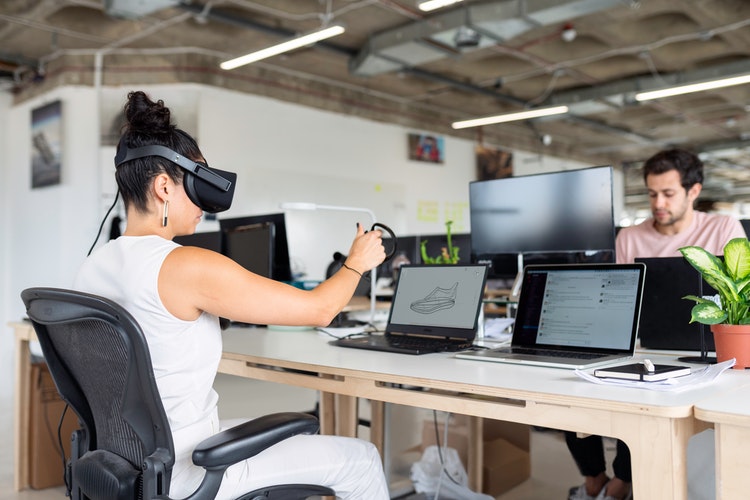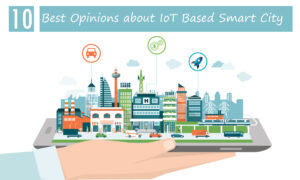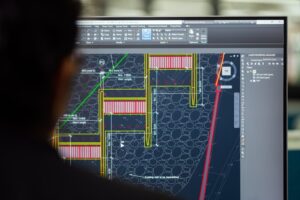A typical employee takes time to adapt to the change in any form of workplace transformation. While some are early adopters, some spend much energy unlearning, changing and relearning. And then, there are a few employees who show complete resistance to the change before finally switching jobs for good.
Change in an organization is constant but it indeed brings with it a host of challenges. After all, it is an essential component of business growth. The lack of employee engagement can lead to delays in adoption and usage, which hampers business continuity in the long run.
No wonder workplace change managers are now moving to futuristic technologies such as Artificial Intelligence (AI), more specifically, AR/VR to nudge employees to fully immerse themselves in interactive experiences and embrace change as they should for the organization.
Defining Augmented Reality (AR) and Virtual Reality (VR)
AR and VR technologies are revitalizing the new normal for businesses. The AR hype had first found ground back in 2018, and since then, it is being widely used to improve the overall employee performances and customer experiences.
PwC predicts that AR and VR will positively impact 23 million jobs by 2030. The technology finds applicability in training, meetings, and even business functions such as customer service.
“Both AR and VR technologies are among the most exciting trends today for various reasons. On the one hand, AR applications let you explore superimpose digital content in real-world locations, such as images, text, and sounds.”
And on the other, VR transforms your vision into a simulated experience that can be similar or completely different from the real world — only limited by your imagination.
AR/VR usage booms in the workplace amid the pandemic
The pandemic has disrupted business operations across industries, leading to changes such as remote working. It made collaboration among teams tougher than ever, especially in roles like operations, finance and IT where security is paramount.
The adoption of digital approaches, including the implementation of AR, has helped businesses improve the productivity of their workforces.
Specific use cases include real-time interaction among teams worldwide, real-time access to information, and a controlled training environment — a necessity to execute change management during the pandemic.
The technologies have successfully come together — from recruitment and prototyping to creating an Extended Reality (XR) environment, thus boosting your organization’s resilience.
Benefits of AR/VR in the workplace
When you check out the five pros mentioned below, you will realize how AR and VR have helped implement change management, enabling employees to learn faster and retain the information for longer. Here is how offices can benefit from the two technologies:
1. Accessing real-time information
AR devices such as smart goggles can help your workforce access crucial data in real-time. This is extremely useful in the case of manufacturing units where handling equipment on assembly lines or other critical spots across the factory floor has to be done properly.
Smart goggles can quickly spot any issues and fix them in time, thus avoiding accidents. Easy access to real-time data during meetings can help in informed decision-making. This improves productivity by ensuring the relevant data is used while framing policies or designing solutions.
2. Keeping workplaces safe
The use of Augmented Reality in the workplace can be beneficial for the safety of workers and equipment at the workplace. It provides them with a realistic training scenario that they would face if an emergency arose.
For instance, there is nothing better than using virtual simulations of a live wire obstruction or fire breakout. It allows the employees to practice handling possible hazards before things actually go wrong.
AR also allows employees to access relevant information even from critical places like near a boiler or on top of machinery.
3. Reducing the skills gap
Companies are adopting newer processes across functions, thereby increasing the skills gap. HR managers often face the challenge of finding the right people for a complex task. AR helps them train new hires through interactive training sessions.
The learning curve is shortened for the new employees, thereby saving training time. The recruits can also be guided step-by-step through non-repetitive tasks.
4. Virtual prototyping to develop products faster
The traditional product development process typically involves building a physical prototype and taking it to the lab for testing. The tests will likely reveal several design flaws that require re-design or reconfiguration, but this is an unnecessary expense in many cases.
Virtual prototyping speeds up the process by eliminating unnecessary steps. Virtual testing allows optimization of the design, reducing the cost and time of product development.
5. Improving collaboration
Collaboration among remote teams has been the most significant challenge during the pandemic. Deploying AR technology allows each teammate to be a part of the experience while saving travel costs and keeping all safe. Visuals and data can also be shared in an easily consumable fashion with employees for fruitful discussions.
Quick tips to support AR and VR adoption for change management
Now that you know the benefits the two technologies bring to the table, let us see how your business can support their deployment for addressing a change:
1. Identify stakeholders who can help with the adoption
Introducing innovative technologies such as visual assistance requires a smooth roll-out for a quick return on your investment. By adopting established change management strategies, you empower your employees to leverage the new tech quickly.
A crucial step of change management is identifying leaders and change agents. Identifying key individuals and teams help create an environment that makes others comfortable with the change as it is easy to resist it.
Leaders can communicate changes internally and motivate teams. They help to reduce resistance to new processes. It would be best if you shared the benefits of adopting AR/VR support to make your employees realize how using it will help them every day.
Acceptance to change increases once the employees relate to how it eliminates mundane tasks and achieves faster results. You can consider stakeholder feedback to determine the best ways to communicate change and its benefits.
It can range from creating video tutorials demonstrating how to use the software or having face-to-face interactions to explain how the adoption of AR/VR will reduce common pain points and make work easier for employees.
2. Educate systematically via different modes
Teams respond to rewards and recognition with quicker adoption of the change. Healthy competition works best to gear up teams to change. Take help from leaders and change agents to set clear expectations of the new process.
More resistant teams can be paired up with established champions to motivate them and unfreeze acceptance behavior. Gamification also helps in boosting employees to use new processes and tools.
You can reward them by setting up different levels of the process as challenges and tallying performance on a leaderboard. Take the challenge up by rewarding achievers with gift cards, lunches, or personalized accessories.
Companies can use various tactics to drive the adoption of new technologies, like enforcing clear expectations and forced compliance with targets. Though formal processes of withholding bonuses or promotion upon non-adherence add pressure onto an already sensitive situation.
3. Connect the tech to existing processes
Your employees are already aligned with your business processes, so you must connect the new technology with existing ones. Instead of redefining the entire process, you can integrate visual assistance into them.
It is vital to ensure that the AR/VR technology you plan to use is easily embedded into your infrastructure. A new interface or duplication of work can lead to resistance from teams.
Easy deployment is another benefit of identifying where visual assistance fits your existing business processes. Identify where the new technology fits and how it can improve existing processes. Identify common problems and resolve them to reduce employee frustration.
Create documentation for the change management process steps and decide how and when to initiate the adoption. Plan training and support sessions to minimize repetition.
4. Prioritize dynamic training
Research shows that it takes around two months for someone to develop confidence and self-efficacy in their ability to use something new. If users are given this opportunity early on, there is a much higher chance of success.
You have the capacity to plan your roll-out strategy well. A successful and lasting implementation starts with confident training on using the tools at hand.
When you are looking to train your team on a new system, it is best not just to provide them with the tool. Instead, it would be best if you eased their minds about why the change is happening and what will happen at each stage.
Set a clear path to adoption of the new technology and easier enablement. When your team arrives for training, they should know why the organization has invested in visual support and how they will be trained.
Send them introductory videos, so they turn up for the training well-prepared. Allow time during sessions to experiment with the technology with friends or family members to put users at ease with the technology.
It provides new users a hands-on experience while they learn how it works. Discuss their experience and even point them to the correct person for any queries they might have later.
Over to you
AR and VR technologies have the potential to be a powerful tool for increasing customer experience and employee productivity.
Now imagine the way that they could be used in your organization. Whatever you decide will allow your workforce to engage in novel ways and enable them to take action with ease. AR and VR are emerging technologies disrupting industries, and there is no going back now.










